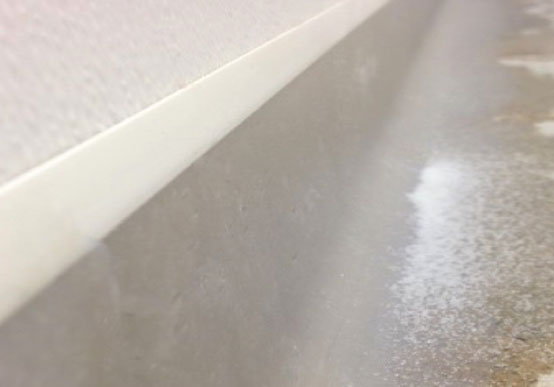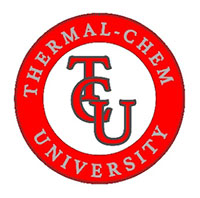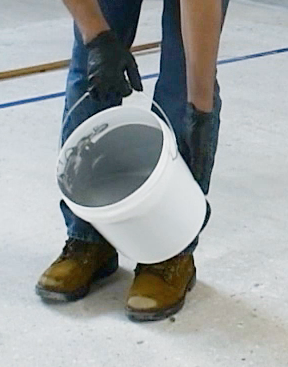Thermal-Chem Times #2 – Newsletter
Featured Product
Thermal-Chem’s #726 Cove Base Kit
Installing Cove Base Has Never Been Easier

Our #726-CV epoxy base cove system is ideal for use in areas that require a seamless transition from floor to wall. This integral monolithic system is ideal in areas that require clean and hygienic environments such as commercial kitchens or medical facilities. This trowelable kit comes with everything needed for ease of use.
#726-CV takes the guesswork out of mixing the correct ratios of epoxy, sand and thickening agents to try and create epoxy coving material at the job site. Each kit contains everything you need to mix the perfect consistency epoxy cove material every time. It contains 72 ounces of thickened up Part A and B, with a bag of premeasured sand that will cover 23 lineal feet of 4″ high cove base.
AROUND THERMALCHEM
 Thermal-Chem University Graduates 1st Class
Thermal-Chem University Graduates 1st Class
Thermal-Chem is proud to announce that our contractor training has begun. This past month we had a dozen contractors from various parts of the Midwest attend Thermal-Chem University. This one-day training program combined classroom and hands-on opportunities to try various Thermal-Chem products and systems. From setting up a proper mix station, understanding proper surface prep, how to install our metallic system, DECOESSENCE, and how to write effective proposals were just a few of the topics covered.
Our next class will be November 9, 2022, at our facility in Broadview, IL.
Contact Michele at Thermal-Chem to put your name on the list for the next class. Classes are limited to 10 attendees.
PRO TIPS
 HOW TO AVIOD THE “RING OF DOOM”
HOW TO AVIOD THE “RING OF DOOM”
Several times a year we get a call from an upset contractor that on their last project the epoxy had some “sticky” spots throughout it. This is likely a result of flipping mixing buckets over and trying to use every drop.
Sometimes it is nearly impossible to get every part of resin to mix with every part of hardener. When you flip over the mix bucket, you are putting unmixed product on the floor, thus leaving the soft spot. This is also referred to the “ring of doom” by some contractors.
